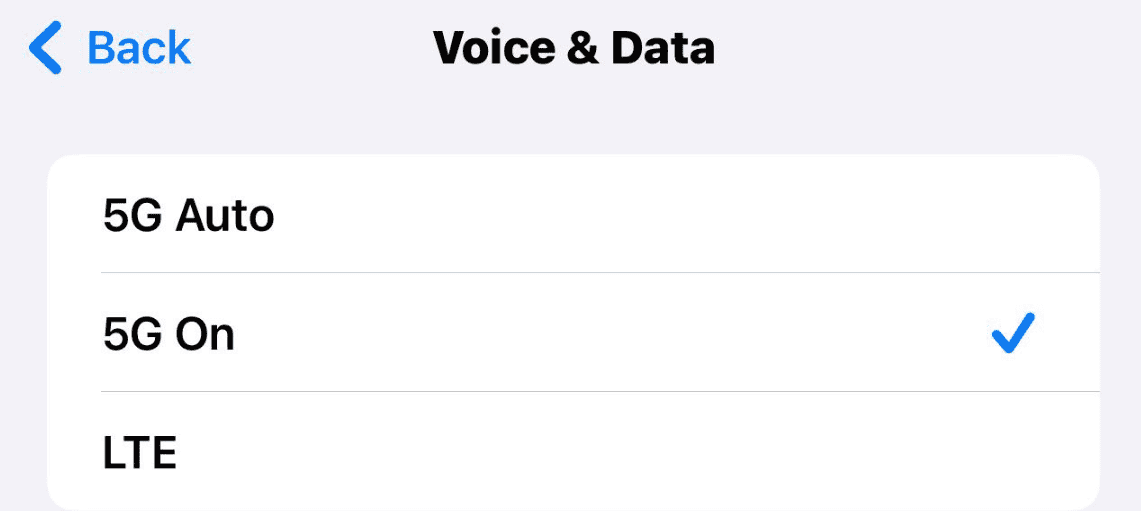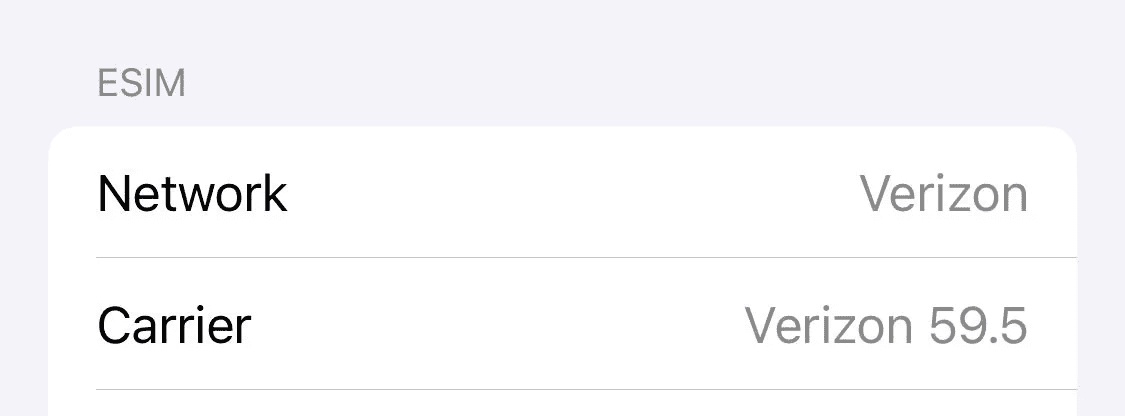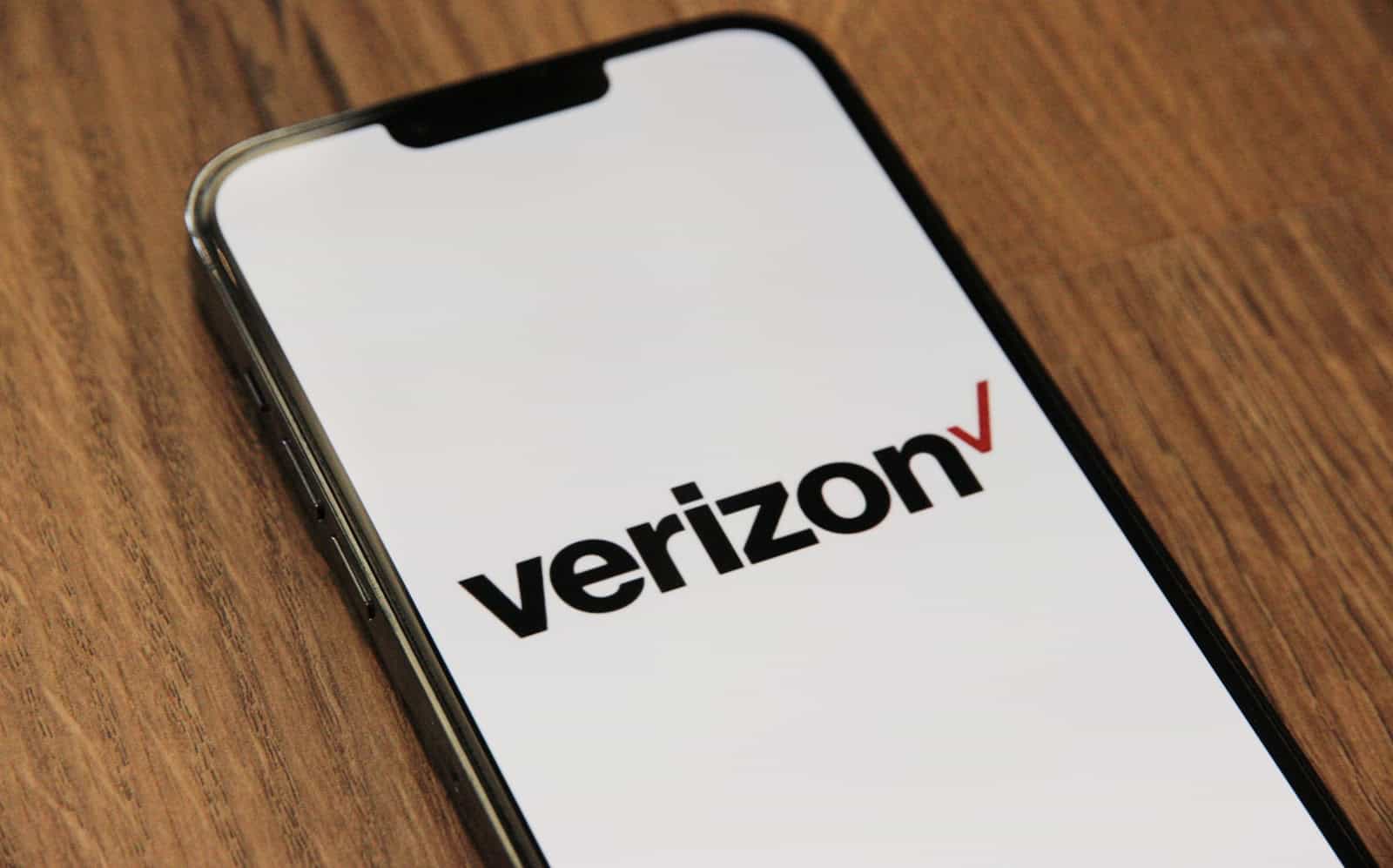Verizon customers using iPhones should update their carrier settings periodically. It’s important for your phone and carrier to work smoothly together for a great mobile experience, so Verizon regularly sends out carrier settings updates to adjust network settings and introduce new features. Keeping these updates current ensures optimal performance for your phone on the Verizon network. These updates address bugs, enhance network speed, and add new features to your iPhone.
Updating carrier settings is easy. Your iPhone will tell you when an update is ready. You’ll see a pop-up message asking if you want to update. Just tap “Update” and you’re done. If you don’t see a pop-up, your settings are already up to date.
These updates are small but important. They help your iPhone connect to cell towers better. They can also fix problems with calls, texts, and data. Keeping your carrier settings current gives you the best Verizon service on your iPhone.

Keeping Connected: Updating Your Verizon Carrier Settings
Carrier settings updates are like tiny tune-ups for your phone, ensuring it works seamlessly with Verizon’s network. These updates can include tweaks to network configurations, access point names (APNs), and even new features. Staying up-to-date is key for optimal performance, so here’s a guide to help you navigate the process.
Automatic Updates: The Easy Route
Most of the time, your iPhone will automatically download and install carrier settings updates in the background. You’ll see a pop-up notification when an update is available, asking you to install it. It’s generally a good idea to do so, as it helps keep your phone running smoothly.
Manual Updates: When Needed
If you’ve missed an automatic update or want to check for the latest version, you can do it manually. Simply follow these steps:
- Go to your iPhone’s “Settings” app.
- Tap on “General,” then “About.”
- If an update is available, you’ll see a prompt to update your carrier settings.
- Tap “Update” and wait for the process to complete.

Troubleshooting: If Things Go Wrong
- Check your network connection: Make sure you have a stable cellular or Wi-Fi connection to download the update.
- Restart your phone: If you encounter any issues during the update process, try restarting your phone and then checking for updates again.
- Reset network settings: As a last resort, you can reset your network settings. This will erase all saved Wi-Fi networks and Bluetooth connections, but it might fix any underlying issues preventing the update. Go to Settings > General > Reset > Reset Network Settings.
Why Update?
Carrier settings updates might seem like a minor inconvenience, but they play a crucial role in keeping your phone connected and optimized for Verizon’s network. These updates can improve network performance, enhance call quality, and even introduce new features. By staying up-to-date, you’ll ensure your phone is always running at its best.
Key Takeaways
- Carrier settings updates improve your iPhone’s performance on Verizon’s network
- Your iPhone will notify you when an update is available
- Regular updates ensure the best calling, texting, and data experience
Understanding Carrier Settings Updates
Carrier settings updates improve how your phone connects to your wireless network. They add new features and fix problems.
The Purpose of Carrier Settings Updates
Carrier settings updates make your phone work better with your cell phone company’s network. They change small files on your phone that control how it connects to the network. These updates can:
• Fix connection problems
• Add new network features
• Improve call quality
• Make data speeds faster
• Allow new services like Wi-Fi calling
Cell companies release these updates to keep phones working well as they upgrade their networks. The updates are small but important for your phone to work right.
Determining When an Update Is Needed
Your iPhone will tell you when a carrier settings update is ready. You’ll see a pop-up that says “Carrier Settings Update”. This means your cell company has new settings for your phone.
To check for updates manually:
- Open the Settings app
- Tap General
- Tap About
If an update is available, you’ll see a prompt to install it. Most updates install quickly and don’t need you to restart your phone. It’s a good idea to install these updates when they’re offered to keep your phone working well.
How to Update Carrier Settings on iOS Devices
Updating carrier settings on iOS devices is simple. It helps fix network issues and improves your phone’s performance.
Update Through the Settings App
To update carrier settings on your iPhone or iPad:
- Open the Settings app
- Tap “General”
- Tap “About”
If an update is available, you’ll see a pop-up message. Tap “Update” to install it. The process takes just a few seconds.
Sometimes updates happen automatically. To check your current version:
- Go to Settings > General > About
- Look for “Carrier” – it shows the version number
New SIM cards may need updated settings. Just follow the steps above after inserting the new SIM.
Troubleshooting Update Issues
If you can’t update:
- Make sure you’re connected to Wi-Fi or cellular data
- Restart your device and try again
- Check that your iOS is up to date
Still having problems? Try these steps:
- Remove and reinsert your SIM card
- Reset network settings (Settings > General > Reset > Reset Network Settings)
- Contact your carrier for help
“No Service” issues often mean you need a carrier update. Follow the update steps or reach out to your provider if it persists.
Advanced Carrier Settings Features
Carrier settings updates bring key improvements to your device’s cellular connectivity. These updates change how your phone connects to networks and uses data services.
Access Point Names (APNs) and Tethering Settings
APNs control how your device connects to the internet. When Verizon updates these settings, it can fix connection problems or improve data speeds. APN updates may change:
- Network names
- Login details
- Connection types
Tethering lets you share your phone’s internet with other devices. Updates can:
- Enable tethering if it wasn’t available before
- Improve tethering speeds
- Fix bugs that stopped tethering from working right
To check for APN updates, go to Settings > Cellular > Cellular Data Options > Cellular Network.
Handling New and eSIM Cards
When you put in a new SIM card or set up an eSIM, your phone may need new carrier settings. This makes sure your phone works well with the new network.
For physical SIM cards:
- Turn off your phone
- Put in the new SIM
- Turn on your phone
- Follow any setup prompts
For eSIMs:
- Go to Settings > Cellular
- Tap “Add Cellular Plan”
- Follow the steps to activate
After adding a new SIM or eSIM, your phone should ask to update carrier settings. If it doesn’t, you can check manually in Settings > General > About.
Frequently Asked Questions
How often are carrier settings updated?
Carrier settings updates vary in frequency depending on network changes and improvements. You might see updates every few months or less frequently, depending on your device and carrier.
Do I need to be connected to Wi-Fi to update carrier settings?
No, you can update carrier settings using either a cellular or Wi-Fi connection. However, if the update is large, using Wi-Fi might be faster.
What happens if I don’t update my carrier settings?
While you can technically skip carrier settings updates, it’s not recommended. Outdated settings might lead to network connectivity issues, call quality problems, or missing out on new features. It’s best to keep your phone up-to-date for optimal performance.







